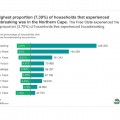
Housebreaking is the number one crime in SA
There were about 1,3 million incidences of housebreaking affecting 5,8% of households in South Africa. The most likely victims of housebreaking were male-headed households, households in metros, Indian/Asian households followed by white households, very low and very high-income households, and households in Northern Cape, Gauteng and KwaZulu-Natal. Approximately 48% of affected households reported incidences to read more »
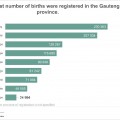
More than 1 million births registered in 2018
Just over 1 million births were registered in South Africa in 2018. According to the Recorded live births, 2018 report released by Statistics South Africa, this reflects an increase of 2,0% from 2017 to 2018. A total of 1 009 065 births were registered in 2018. This includes the total number of births that occurred and read more »
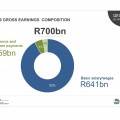
SA formal sector jobs decline in second quarter of 2019
The June 2019 Quarterly Employment Survey, released by Statistics South Africa, showed that an estimated 10 172 000 people were employed in the formal non-agricultural sector of the South African economy, which is down by 2 000 from the 10 174 000 recorded in the previous quarter. Full-time employment decreased by 26 000 to 9 103 000, and part-time employment increased by 24 000 read more »
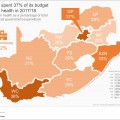
Provincial government spending: Education and health
South Africa’s 123 provincial government departments spent just over R17 600 per second in the 2017/18 fiscal year. That represents a total of R557 billion over a period of 365 days. The bulk of the money flowed into provincial governments’ two main areas of responsibility: education and health. Education took up the lion’s share. For every R100 read more »
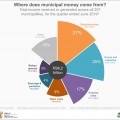
An update to municipal spending and revenue (June 2019)
South Africa’s 257 municipalities spent a total of R101,3 billion in the second quarter of 2019 (April to June). This is the first time that quarterly municipal spending has breached the R100 billion mark. The R101,3 billion is R15,3 billion more than what was spent in the first quarter (January to March), representing an increase of 18%. This read more »
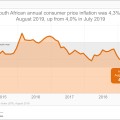
CPI inflation edges up in August
Annual consumer inflation quickened in August, reaching 4,3% year-on-year from the 4,0% recorded in July. This was associated with higher inflation in food and non-alcoholic beverages, housing, transport and recreation. Annual food inflation reached its highest level in 18 months, registering 3,8% in August. The pickup in food inflation was mainly driven by upward pressure read more »
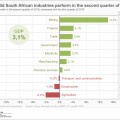
Economy dodges recession as GDP climbs 3,1%
After shrinking sharply in the first quarter of 2019, the economy rebounded from a low base to record positive growth of 3,1%1 in the second quarter (April−June). Mining, finance, trade and government services were the main drivers of growth. Three industries (construction, agriculture and transport) registered a slump in production. Mining was the strongest performer read more »
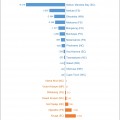
Municipal bucket toilet use continues to decline
The number of consumer units using municipal bucket toilets fell from 60 557 in 2017 to 42 612 in 2018. This represents a 29,6% decrease in a single year, according to the latest Non-financial census of municipalities report. In 2014, the total was 85 718. The bucket toilets1 mentioned here are those that municipalities provide to communities located read more »
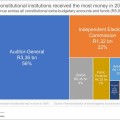
Constitutional institutions: a financial snapshot
Constitutional institutions are tasked with strengthening South Africa’s democracy, by keeping a watchful eye on government and society at large. Recent financial data show which constitutional institutions are receiving the biggest piece of the revenue pie. The Auditor-General was the largest recipient of revenue in the 2017/18 fiscal year, taking up 56% of revenue received read more »
Inflation dips lower in July
Annual consumer price inflation retreated to 4,0% in July from 4,5% in June. This is the lowest CPI headline rate since January, when it was also 4,0%. A fall in fuel prices and a rise in municipal tariffs were the key price movers during the month. Fuel prices edged lower in July, bringing some relief read more »


